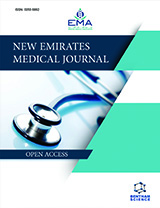Abstract
Background: The risk of the post-operative severe atrioventricular block is high when infective endocarditis spreads to the conduction system. However, a clear surgical method to prevent post-operative severe atrioventricular block in infective endocarditis patients has not been developed.
Case Presentation: A 39-year-old man with a persistent fever was referred to our hospital. Echocardiography showed mitral valve infective endocarditis with severe aortic regurgitation due to a congenital bicuspid aortic valve. Before the surgery, a paroxysmal atrioventricular block appeared. Intraoperative inspection revealed an aortic-root abscess with ulcerated lesions below the commissure of the noncoronary-right coronary cusps and perforation of the anterior leaflet of the mitral valve. Considering the risk of atrioventricular block, the ulcerated lesions were only cleared with saline solution. After replacing the mitral valve with a mechanical mitral valve, the interventricular fibrous body and aortic annulus were reconstructed with a bovine pericardial patch. The mechanical aortic valve was sutured to the reconstructed aortic annulus. Two years after the surgery, severe atrioventricular block did not occur.
Conclusion: Our method may be effective when the risk of post-operative severe atrioventricular block is high and the patient’s prognosis worsens.




























